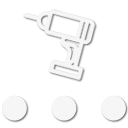
Inventor I
- 13,232
- First Name
- Bjoern
- Last Name
- Eldracher
- Member #
-
20111
- Ham/GMRS Callsign
- DO3BE

Communication is the key to success. This is also true for communication while on the road. Whether it is to quickly agree on the next point for a coffee break in a group, to point out places of interest, to draw attention to difficult situation, track spotting, to chat with each other or to organize help.
Also, in view of the International Marconi Day (24.4) recently, I thought about the topic of overlanding radio comms in more detail. I have been using CB for many years and am an amateur radio operator with a Class E certificate, which allows access to some amateur radio bands here with a maximum transmit output power of up to 100 W PEP in the shortwave area and up to 75 W PEP in the ultra-shortwave area. This class corresponds to the CEPT Novice license. My callsign is DO3BE.
We have here in the OB forum many good contributions to the topic like the OB Comms Frequency Guide for example. And I would like to supplement this with a specific view to the European conditions.
Radio technology offers an incredible number of possibilities. This starts, for example, with the remote control for your electric winch. But back to the topic. While there are many different radio applications, we overlander mostly use voice radio. There are various techniques that cover this area more or less well.
CB radio
Most European overlander still use CB radio in their rigs. This kind of "citizens band radio" can be used without license and running costs. Devices and antenna are already available for comparatively small money. CB radio is used in the range from 26.565 MHz to 27.405 MHz (11 m band). As already mentioned, it is intended as "everyone's radio" for the personal exchange of information.
The achievable range depends on many factors. These include the transmitting power, the antenna and also obstacles. CB radio power is limited to a transmit power of four watts in AM and FM modulation modes and 12 watts in SSB modulation mode. So, with permanent mounted mobile devices, ranges of about 10 to 30 kilometres can be achieved, rarely even more. Handheld radios, which are intended in particular for communication in the near field, have a rather small range of about 1 to 5 km, sometimes even less. Available are 40 or 80 channels.
Some channels have special meaning in CB radio, the best known here in Germany/ Europe is probably channel 9 AM as an emergency call and trucker channel.
ATTENTION: However, it is not possible in Europe to send an emergency call directly to a permanently manned emergency control centre via CB radio.
By the way, over here CB radio is also used to automatically sent out warnings of mobile construction sites, slow-moving work machines and the like on German highways (as far as I know, there is a similar system in Austria). This warning is intended to prevent the unfortunately recurring serious accidents. And save lives. This warning is sent out by small transmitters. The warning is given in different languages - depending on the frequency/ channel switched on. Furthermore, there is a similar technical possibility that emergency vehicles warn of their approach.
Overlander use channel 16 FM commonly (4x4=16).
REGULATION: There were numerous individual regulations on CB radio in many European countries, especially in the past. With the decision of the Electronic Communications Committee (ECC) of the European umbrella organization Conférence Européenne des Administrations des Postes et des Télécommunication (CEPT), from June 2011, a harmonization was decided. Please inform yourself in advance about the applicable regulations in your country (you can check the status of harmonization implementation in the ECO Documentation Database).
With the invention of the cell phone, usage of CB radio has declined sharply, but its simplicity, low initial cost and comparatively acceptable range make it a great way to communicate in a convoy or for terrain spotting and briefing.
PMR446 radio
Then we have PMR446 radio (sometimes called PMR only) and it is also being used more or less frequently in overlanding rigs. This is also a "personal radio application" that can be operated without additional costs and license-free.
The abbreviation PMR stands for Personal Mobile Radio and is more or less the European equivalent of the American Family Radio Service. PMR446 devices operate in the VHF range from 446 MHz to 446.200MHz. PMR446 devices may be operated in many European countries.
The devices may have a range of 0.5 watts due to their design. In very good conditions a range of up to 5km can be achieved. Often, however, very much less due to buildings or other obstacles. Even dense foliage on trees can be a hindrance here. Not very helpful, especially in the city when driving in a convoy. Legal PMR446 radios also do not have detachable antennas, so there are no options available for this to improve reception as there are for CB, for example.
There are also only 16 channels available. However, for the occasional trip to the pay n play off-road park, for example, the PMR446 handheld radios are a good communication option.
HAM radio
In Europe with the overlander community not so common yet, is HAM radio. The barriers to entry are much higher than for the "personal radio applications". For example, a license, a so-called amateur radio certificate, and a permit to participate in the amateur radio service are required (different rules in different regions). This is associated with a comparable high learning and examination effort as well as costs. T
To get an idea I give you an example here: The German amateur radio class A requires a test with 102 questions regarding 3 parts: technical knowledge (34), operational knowledge (34) and regulations (34). The class E exam (fewer options/ limited use than A) requires a test with 119 questions regarding 3 parts: technical knowledge (51), operational knowledge (34) and regulations (34). The pass rate is 75%, multiple choice with 4 answers to choose from, time limit for each part 60min (90min for technical part in class A). The questions are picked out of a catalogue with around 2,000 questions. There are several preparation courses (online and presence) which are for free or cost little money (for example to support the organizing club).
An example regarding the costs: For HAM, in Germany, we have to pay between 80 and 110 Euro exam fee plus 70 Euro for the admission to participation in the amateur radio service/ allocation of the callsign. In addition, there is a yearly fee charged by the federal network agency.
Overall, however, a very good alternative to the other radio solutions. HAM radio offers a wide range of possibilities and long ranges.
Mobile, the 70cm (430 MHz - 440 MHz) and the 2m band (144 MHz - 146 MHz) are mostly used. In the 2m band, ranges of up to 150km can be achieved with a good system and good conditions. In the 70cm band much less. To achieve larger ranges, relay stations can be used. The general calling frequencies are 145.500 MHz and 433.500MHz. The operation is regulated differently from country to country.
People who have fun to learn new things will find here an interesting radio application, which also offers many possibilities for overlanding.
Other radio comms
I have deliberately omitted other regionally restricted radio applications. In Germany, for example, we still have "Freenet". Not particularly widespread among overlander and also not particularly useful, since the radio application is regionally limited to Germany and even there are restrictions on transmission operation near the border.
Conclusion
So, despite all the possibilities of a cell phone, radio is still very widespread among overlanders. This is because there are a lot of pros for this technology of communication. No further infrastructure, such as transmission towers with cell phones, etc., are required. So, radio comms in general always work, as long as the range is not exceeded. While “personal radio applications” are simple and inexpensive while providing usable ranges, getting started with HAM is more costly but offers enormous ranges and possibilities. In the end, I would choose the radio application that best meets my own needs. One question that everyone should ask themselves is what system the overlanders use that you are usually traveling with.
I myself, for example, rely on CB radio and HAM radio when I'm on the road. CB radio for driving in the convoy (many have CB radio in the vehicle) and HAM for further distances for long-distance travel, special applications such as APRS, and just out of interest.
Before you go, please find out about the regulations in the country you are traveling to. The subject of radio comms is often regulated very differently. This also applies to the carrying, importing and exporting of radio equipment.
I hope to be able to add a little more Europe-specific information with this and thus help one or the other. Which radio applications do you use in the rig when you are on the road in Europe? Feel free to collect more information here.
Have also a look at the OB Communications subforum here. There you will find many suggestions and installation examples around the topic of radio comms.
Have fun and safe travels,
Bjoern





